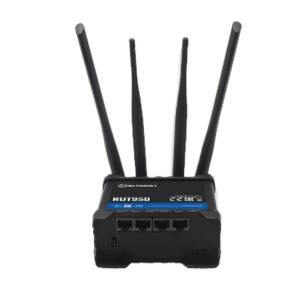
The average cost of a data breach is currently estimated to be around $4.2 million. It makes sense that companies want to secure their data at all costs, and the IoT sector is no exception.
This is a worldwide problem, but is particularly relevant in North America, where the ransom cost per GB of data held by hackers is estimated at $39,000. Among the most targeted sectors are energy, healthcare, manufacturing, utilities, maritime, and defense.
If you’re working with remote IoT solutions, one of the tools in your arsenal is the choice between a public and private IP address. However, neither is without its challenges, and the best option for your solution is not clear-cut. Still, you don’t want to risk a security breach – so what should you do?
As it turns out, Teltonika Networks RMS Connect can solve this very issue. But first, let’s talk about what private and public IPs bring to the IoT table.

The Private IP Challenge
The main challenge with private IPs for IoT is that devices with private IP addresses cannot be accessed from the Internet directly, as such an address is used for internal communication within the same networks. This is great for companies with all of their devices operating from the same building, but not for IoT solutions that involve remotely connecting devices in different locations. More and more such solutions are created each year, making it a rapidly-growing market. When it comes to private network services, the Internet service provider (ISP) is the one controlling your network. The ISP will automatically block devices outside your network trying to communicate with devices within your network.
This challenge can be overcome, but overcoming it involves complex methods allowing remote communication. These include VPNs, APNs, dedicated gateways, and specialized network configurations. However, these methods add cost and complexity to the solution, and require continuous maintenance. This is on top of getting software that supports communication of different protocols.
This leads many IoT engineers to simply use a public IP. But how viable is this option?
The Public IP Challenge
Assigning a public IP for your solution’s devices makes them publicly accessible, and therefore exposed to cyberattacks. This is because accessing a remote device requires it be publicly identifiable. Malicious actors are then able to search for vulnerabilities in your network and launch an attack. There are many security steps that try to circumvent this, such as whitelisting incoming connections, routinely changing your passwords, disabling unused services, and more. But at the end of the day, the security of your devices remains at risk.
Another challenge with public IPs is their accessibility. To put it simply, the demand for public IPs is high, but the supply is low. This is because the fourth version of Internet Protocol (IPv4) has a limited number of unique IP addresses. The result is that public IPs come with a higher price that isn’t getting any cheaper. Availability and price vary from country to country and among different ISPs, so even if you’re willing to risk the security of your solution in favor of simpler architecture, a public IP may not even be accessible to you.
But don’t worry. At the end of this dark, remote IoT tunnel is a light of hope.

RMS Connect: The Best of Both Worlds
This light of hope is RMS Connect. Using RMS Connect, you don’t need to assign a public IP address to your devices or host your service with a public IP address in order to enable remote management. Instead, you can use a private IP address alongside RMS Connect to establish and maintain a secure connection to your remote Teltonika Networks and third-party devices. Doing so keeps your solution’s architecture simple, and lets you keep maximum control over your network as you remotely monitor and control your devices. Best of all, this tool is already integrated into RMS, so you don’t need to worry about additional installations.
If you’re wondering whether using RMS Connect is the best fit for your solution, let’s have a look at a couple of use cases in which such a remote connection is possible. First is a self-service parcel terminal use case that relies on a fleet of our RUT950 high-performance industrial router alongside RMS Connect for establishing and maintaining remote management and maintenance capabilities. With RMS Remote Desktop for accessing the terminals’ user interface, SSH for connecting to the main computer, and HTTP for accessing the IP camera, any form of on-site management or maintenance became a last resort rather than standard procedure – all with the security of a private IP.
Another example is a centralized vending machine POS system use case, in which RMS Connect’s SSH protocol support was used to establish secure remote communication with banking card terminal for IT firmware updates in a remote POS system. Lastly, in a use case involving remote calibration and control of smart traffic light, our partner from Cyprus, M.K. Traffic Technical Solutions Ltd., used our RUT240 router alongside RMS connect for providing third parties with secure remote access to the traffic lights’ controller, in order to make needed adjustments and calibration before launching this product.
Security and simplicity shouldn’t be negotiable for your remote solution – not when RMS Connect can guarantee them.
Rut950
 RUT950 is a highly reliable and secure LTE router for professional applications.
RUT950 is a highly reliable and secure LTE router for professional applications.
The router delivers high performance, mission-critical cellular communication.
RUT950 is equipped with connectivity redundancy through dual SIM failover.
Find out exciting news and more about our products every week at varia.org/blog !

